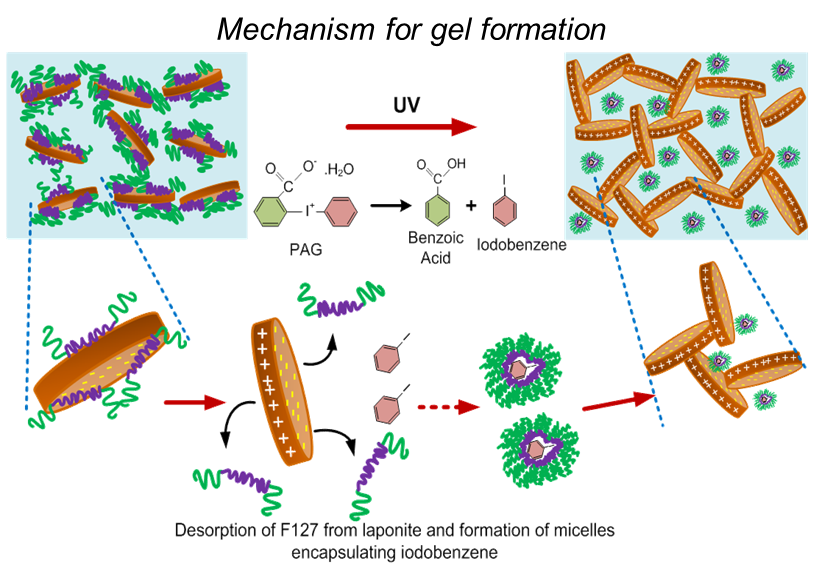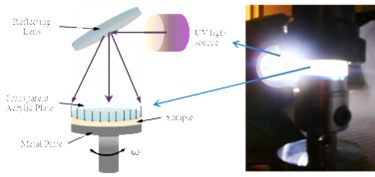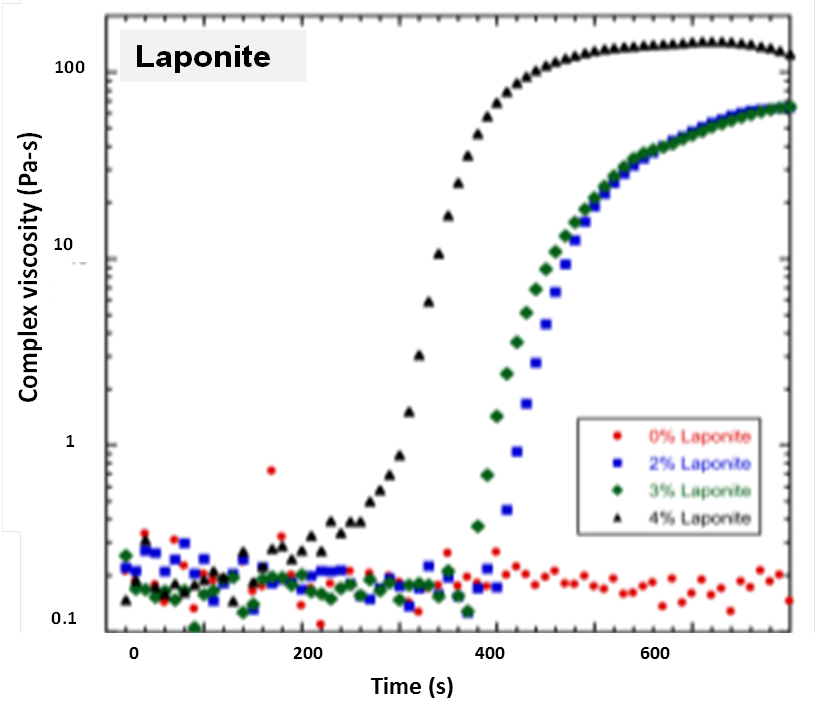Current Research
Amphiphilic Block Copolymer Solutions and Nanocomposite Dispersions
Recent initiatives are focused on evaluating the phase structure, stability, and driving force for ordering in aqueous amphiphilic copolymers solutions and dispersions, coupled with more detailed studies of micelle formation, short range ordering, etc. This has included rheology, DSC, and SAXS.
Amphiphilic block copolymers
The first thrust of this work involves looking at the addition of small model pharmaceuticals to amphiphilic systems. We focus on a commercially available triblock copolymer systems known as Pluronics(R) with the general formula PPO - PEO - PPO. These systems are known to form micelles as temperature increases and at high enough concentrations, the micelles organize in quasicrystalline domains.As this temperature dependent structural change occurs, a liquid to gel transition also takes place.
Our work focuses on probing the thermodynamics and kinetics of this liquid to gel transition using a combination of DSC, thermorheology and in-situ synchrotron SAXS for time resolved structural evolution. We also investigate the effect of different model pharmaceuticals on the micelle formation, gelation kinetics and arrangement with an eye towards designing drug delivery vehicles.

Left: schematic of temperature induced micelle formation; Right: effect of block copolymer concentration micellization thermodynamics

Top left: Schematic of transmission SAXS setup used to study block copolymer structure; Top right: 1D patterns of temperature dependent structural changes in block copolymer solutions; Bottom: 2D images of scattering patters obtained at differetn temperatures
Nanocomposite dispersions
Our work on nanocomposite dispersion focuses currently on the use a photoactivated liquid to gel system following the scheme shown below. Here, we make use of the natural ability of these Laponite nanoparticles to interact electrostatically and control when these interactions are allowed to start using a combination of a small amout of Pluronic surfactant and a photoactivated acid generator.



left: mechanism of photo-induced gelation; middle: Photorheology setup used for in-situ photogelation studies and righeffect of laponite of photogelation kinetics during photo-rheology
Our work focuses on understanding the system components that control the gelation kinetics as well as the final gel properties using a variety of techniques such as photo-rheology, DSC, DLS and synchroton SAXS. We are currently working on developing methods to conduct UV - SAXS experiments to obtain time resolved measurements of UV induced changes.
Protein Systems
Proteins play an important role in biological functions and understanding how certain types of diseases occur. Amyloid proteins in particular have been linked to a number of neurodegenerative diseases such as Alzheimer's. Better understanding of the behavior of these proteins as well as their aggregation kinetics and inhibition of aggregation are a key part in understanding and addressing treatment options.
We focus on using insulin both as a model amyloid protein but also because of it's clinical relevance in the treatment of diabetes. Our work focuses on the studing the aggregation behavior and kinetics of insulin both with and without different potential aggregation inhibitors. Our goal is to characterize both the bulk and micro - scale protein interactions related to the aggregation behavior of insulin using rheology to moniotor the viscosity evolution during the aggregation process (bulk properties) and SAXS to monitor the changes in shape and size of the system with temperature and time (small scale interactions).
Top left: Schematic of aggregation steps related to viscosity evolution; Top Right: Influence of aggregation inhibitors on viscosity evolution for bovine insulin
Bottom: example of size and shape evolution of insulin in solution with and without inhibitors during temperature induced aggregation
Additional work on photoinduced crosslinking of protein gels as a means of reinforcement is also being pursued.